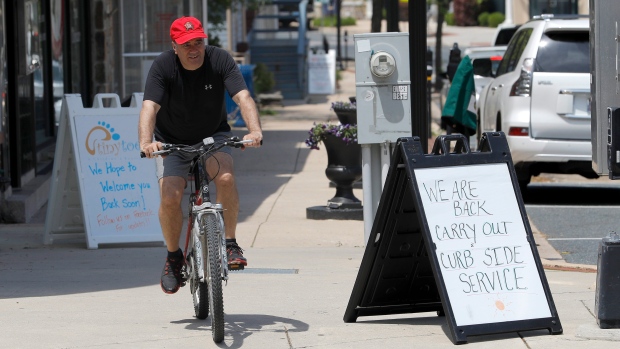Jun 8, 2020
Fed expands Main Street program to include more small businesses
, Bloomberg News

The Federal Reserve expanded its Main Street Lending Program, which it said will be open for eligible lenders “soon,” allowing more companies to participate and lessening the burden on banks that create the loans.
“Supporting small and mid-sized businesses so they are ready to reopen and rehire workers will help foster a broad-based economic recovery,” Fed Chair Jerome Powell said in a statement Monday accompanying the announcement. “I am confident the changes we are making will improve the ability of the Main Street Lending Program to support employment during this difficult period.”
The program, among nine unveiled by the Fed to combat the fallout from shutting down the U.S. economy to limit the spread of the coronavirus, has been long awaited since it was initially announced in late March. Powell can expect more questions on how many jobs it will save when he speaks to reporters Wednesday following a meeting of the Fed’s policy-setting committee.
Principal Deferment
Businesses participating in the program, which aims to boost lending to small and mid-size companies through three facilities, will be able to defer principal payments on their loans for two years, up from the previously announced one year. Interest payments will still be deferred for one year.
Read More: Wall Street Doubts Fed’s US$600 Billion Lending Plan Can Succeed
The Fed lowered loan minimums to US$250,000 from US$500,000 and extended the loan term to five years from four. It also increased loan maximums across the three facilities. Company loans up to US$300 million will now be eligible for the program.
Loan recipients are still limited to 15,000 employees or fewer and an annual revenue cap of US$5 billion. The requirements on earnings before interest, taxes, depreciation, and amortization remain the same for each facility.
Less Skin in Game
Banks will be required to hold 5 per cent of the loans on their balance sheet for all three facilities, where previously they had to hold 15 per cent of loans to more-risky businesses. With that change, and the increase to the maximum loan size, the Fed is taking on more of the risk.
The adjustments address concerns around whether companies would utilize the lending facilities, and whether banks were willing to make the loans. The Fed said it expanded the program to make it available to a wider array of businesses and to better help those that have been shut down, and facing significantly reduced revenue, for months.
“There was some thought that the program was a paper tiger that looked really good but wouldn’t be used,” said Nathan Sheets, PGIM Fixed Income chief economist. “The Fed is saying that they really want to lend through this window, that this is important for the economy.”
While these modifications should increase uptake of the facility, the Fed opted to leave unchanged the affiliate rule which makes ineligible many companies owned by private equity firms. In addition, the restrictions on dividends and executive pay remain, as does the vague stipulation for companies to try to maintain their payroll.
‘Shortly Afterward’
The Main Street program will be open for lender registration soon, the Fed said, and it’ll start buying loans “shortly afterward.” The three facilities will buy up to US$600 billion in loans and are backed by a US$75 billion investment from the Treasury Department. The backstop is part of the US$454 billion allocated by Congress in the CARES Act for the Fed’s emergency-lending programs during the coronavirus pandemic.
This marks the second update to the Main Street program, which was first announced March 23. The Fed said it received more than 2,200 comment letters about the program, prompting an expansion at the end of April. The central bank has come under scrutiny from lawmakers about its delay in launching the program, which presents new challenges to the Fed, such as how to lend to companies that don’t have official designations from ratings companies.
Powell said May 29 that the central bank was “days” away from launching the facility and called it the most challenging program to set up. The Fed also said that it is working to establish a lending program for nonprofit organizations.
“The changes announced by the Fed today are helpful, but not game-changing for most businesses,” said Carolyn Alford, a partner at King & Spalding who heads the law firm’s finance group. “The modifications to defer payments and extend the life of loans will provide all companies more relief as they weather the economic uncertainty over the foreseeable future.”





